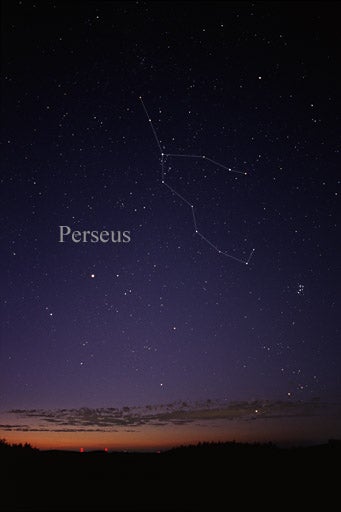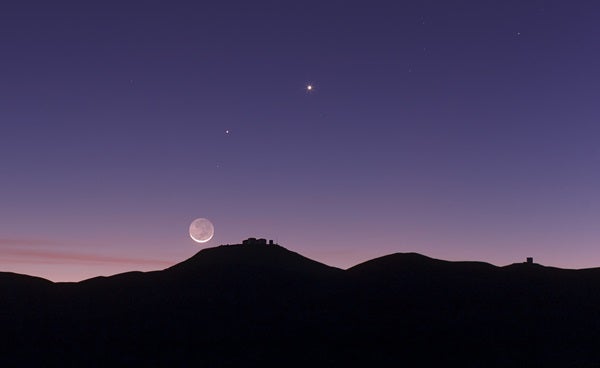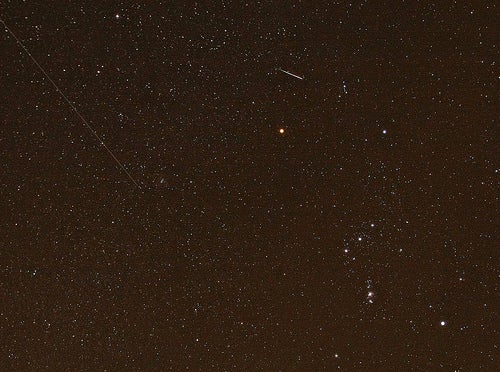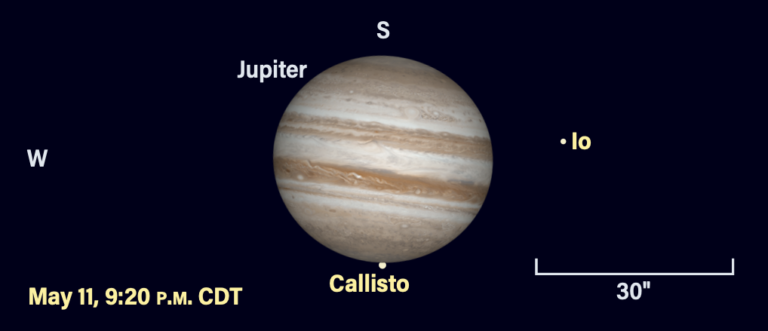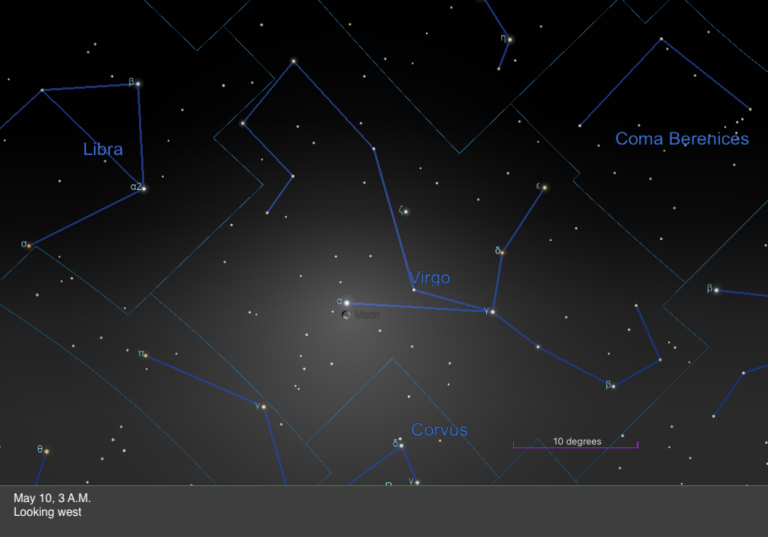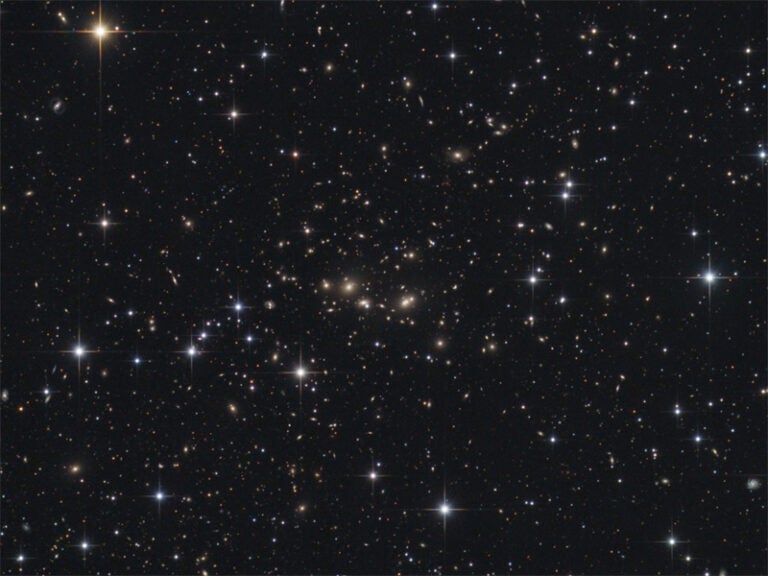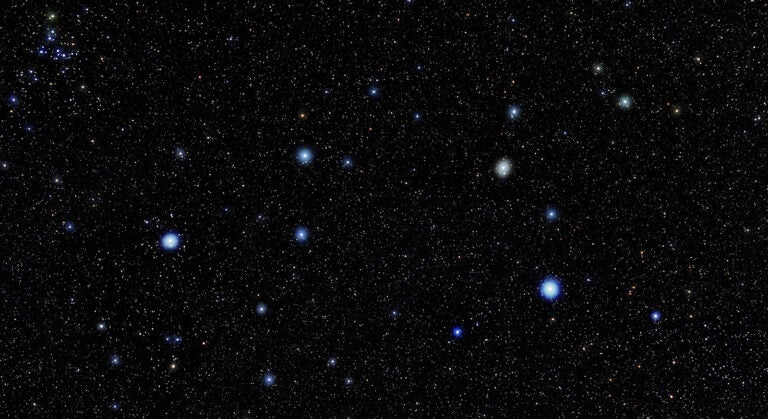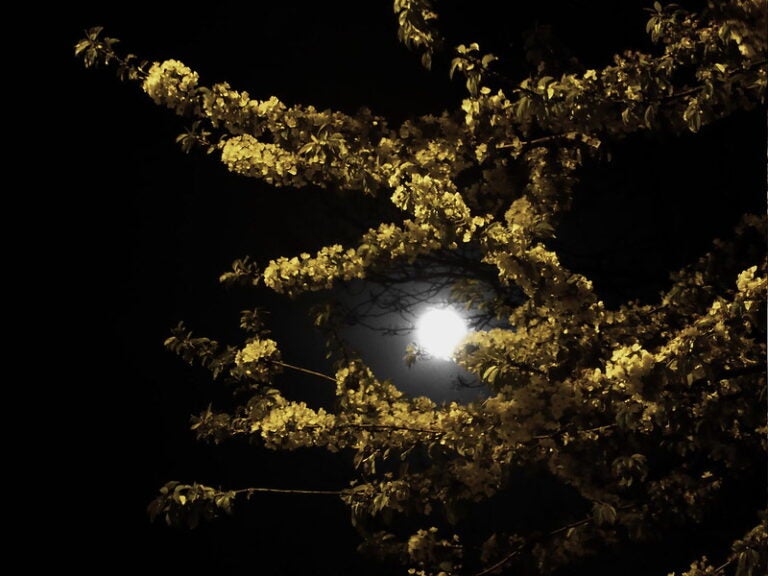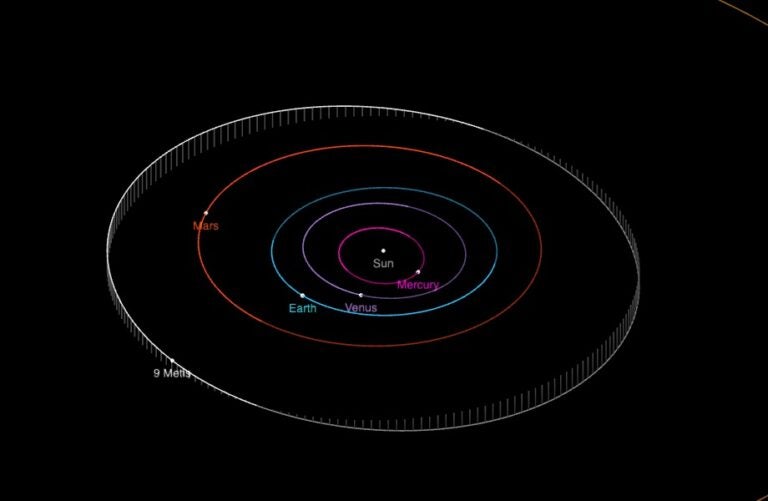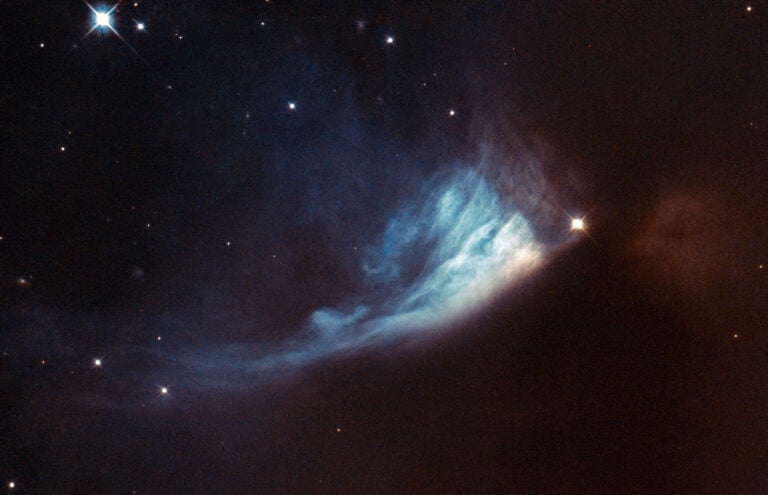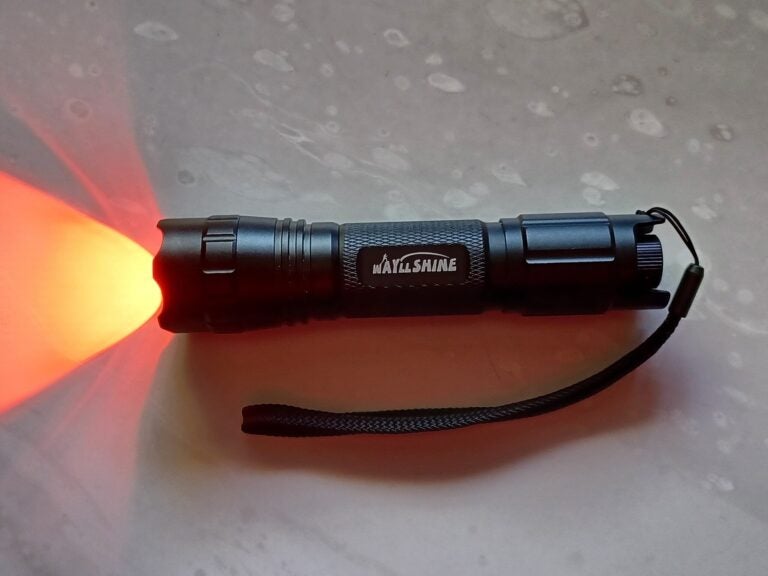Friday, September 23
Last Quarter Moon occurs at 5:56 a.m. EDT. By the time Luna rises tomorrow morning around 1 a.m. local daylight time, its phase has waned noticeably to just 40 percent lit. Earth’s only natural satellite then appears among the background stars of southern Gemini the Twins.
The variable star Algol in Perseus reaches minimum brightness at 11:19 p.m. EDT, when it shines at magnitude 3.4. Over the next few hours, you can watch it more than triple in brightness, to magnitude 2.1. This eclipsing binary star runs through a cycle from minimum to maximum and back every 2.87 days. Algol remains visible all night, passing nearly overhead around 4 a.m. local daylight time.
Saturday, September 24
Uranus reaches opposition three weeks from today, but it already has become a tempting evening target. The ice giant world rises before twilight ends and climbs nearly 40° above the eastern horizon by 11 p.m. local daylight time. The magnitude 5.7 planet lies in Pisces, 2.4° north-northwest of magnitude 4.8 Mu (m) Piscium. Although Uranus is bright enough to see with the naked eye under a dark sky, binoculars make the task much easier. A telescope reveals the planet’s blue-green disk, which spans 3.7″.
Sunday, September 25
Saturn remains a gorgeous sight in the evening sky all week. It stands some 20° high in the southwest as twilight fades to darkness and doesn’t set until after 10 p.m. local daylight time. The ringed world resides among the background stars of southwestern Ophiuchus, just 6° north of Antares, the brightest star in neighboring Scorpius. The yellow-hued planet shines at magnitude 0.5 and appears significantly brighter than the ruddy star. When viewed through a telescope, Saturn shows a 16″-diameter disk surrounded by a dramatic ring system that spans 36″ and tilts 26° to our line of sight.
Although autumn began a week ago and the stars of winter’s Orion now rule the morning sky, the Summer Triangle remains prominent on early October evenings. Look high in the west after darkness falls and your eyes will fall on the brilliant star Vega in the constellation Lyra the Harp. At magnitude 0.0, Vega is the brightest member of the Triangle. The second-brightest star, magnitude 0.8 Altair in Aquila the Eagle, lies some 35° southeast of Vega. The asterism’s dimmest member, magnitude 1.3 Deneb in Cygnus the Swan, stands about 25° east-northeast of Vega. For observers at midnorthern latitudes, Deneb passes through the zenith around 9 p.m. local daylight time, about an hour after the last vestiges of twilight disappear.
Jupiter passes behind the Sun from our perspective, a configuration astronomers call conjunction, at 3 a.m. EDT. Needless to say, our star’s glare makes it impossible to see the planet. Jupiter will return to view in the morning sky in about two weeks.
Tuesday, September 27
Although Neptune reached opposition and peak visibility in early September, it remains a worthwhile target this week. The outermost major planet appears one-third of the way to the zenith in the southeastern sky after darkness falls and climbs highest in the south around 11 p.m. local daylight time. Neptune glows at magnitude 7.8, which is bright enough to spot through binoculars if you know where to look. The trick is to find the 4th-magnitude star Lambda (l) Aquarii, which lies about 10° southeast of Aquarius’ distinctive Water Jar asterism. This week, Neptune appears some 1.9° southwest of the star. When viewed through a telescope, Neptune shows a blue-gray disk measuring 2.4″ across.
Wednesday, September 28
Mercury is now in the midst of its finest morning apparition of 2016. The planet reaches greatest elongation today, lying 18° west of the Sun and appearing 8° high in the east 45 minutes before sunrise. The inner world shines at magnitude –0.5, which is bright enough to see clearly with the naked eye. Binoculars can help you to pick it out of the twilight glow if you can’t spot it immediately. When viewed through a telescope, Mercury’s 7″-diameter disk appears half-lit.
Mars continues to put on a nice show these September evenings. The Red Planet shines at magnitude 0.0 and appears about 20° high in the south-southwest in early evening. Mars lies among the background stars of western Sagittarius. And this evening, it slides 1.5° south of the massive star-forming region known as the Lagoon Nebula (M8), creating a splendid photo opportunity. A telescope reveals the planet’s 9″-diameter disk, which should show a few subtle dark markings during moments of good seeing.
Thursday, September 29
The Moon has one final hurrah this morning before it disappears into the Sun’s glare. The waning crescent, now just 2 percent lit, slides 1° below Mercury. The pair rises nearly 90 minutes before the Sun and climbs some 7° above the horizon 45 minutes ahead of sunrise.
Any clear evening this week is a good time to explore the constellation Sagittarius the Archer. This star group lies just west of due south around 8 p.m. local daylight time, near the time twilight ends. The brightest stars within the constellation form a distinctive asterism in the shape of a teapot. The central regions of the Milky Way pass through Sagittarius, so it’s always worth exploring the region through binoculars or a telescope.
New Moon occurs at 8:11 p.m. EDT. At its New phase, the Moon crosses the sky with the Sun and so remains hidden in our star’s glare.
Brilliant Venus stands out low in the west-southwest during evening twilight. The inner planet lies about 10° above the horizon a half-hour after sunset and sets as twilight comes to a close. At magnitude –3.9, Venus is the brightest object in the evening sky.
Saturday, October 1
The Moon’s absence from the morning sky these next two weeks provides observers with an excellent opportunity to view the zodiacal light. From the Northern Hemisphere, the time around the autumnal equinox (which occurred last week) is the best for viewing the elusive glow before sunrise. It appears slightly fainter than the Milky Way, so you’ll need a clear moonless sky and an observing site located far from the city. Look for a cone-shaped glow that points nearly straight up from the eastern horizon shortly before morning twilight begins (around 5:30 a.m. local daylight time at mid-northern latitudes). The Moon remains out of the morning sky until October 15, when the waxing gibbous returns and overwhelms the much fainter zodiacal light.
Sunday, October 2
Tonight marks the unofficial start of the annual Orionid meteor shower. Although the Orionids won’t peak for nearly three weeks (on the morning of October 21), you should start to see a few shower members in the Moon-free early morning hours. These meteors appear to radiate from the northern part of the constellation Orion the Hunter.

